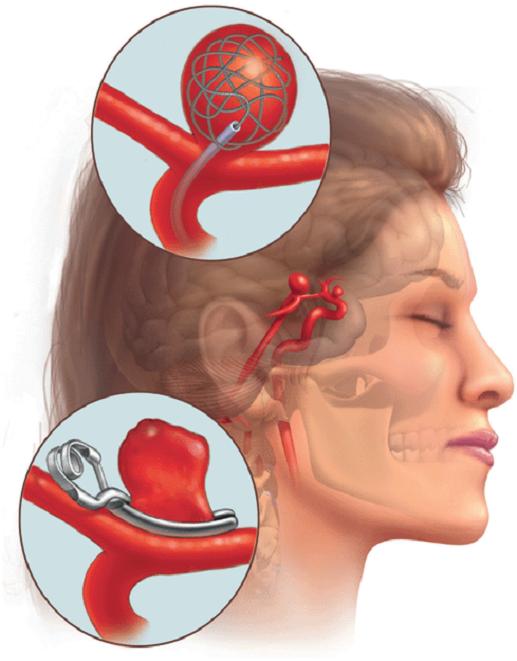Aneurysm Symptoms, Causes, Diagnosis and Treatment

What Is Aneurysm?
The condition is characterized by excessive ballooning or widening of an artery’s part that occurs because of the weakness in the blood vessel’s wall.
What Are The Symptoms Of Aneurysm?
Clearly, the symptoms of aneurysm tend to depend upon the location and form of aneurysm you are suffering from. They also rely on the fact that whether or not aneurysm has burst. Often, it causes no pain and is detected in scans, accidentally!
At times, cerebral aneurysm triggers the following symptoms:
- Loss of vision.
- Facial pain.
- Squinting.
- Severe headache.
- Double vision.
- Tremors.
Rarely, thoracic aneurysm triggers the following symptoms:
- Wheezing.
- Horner’s syndrome.
- Hoarseness.
- Swallowing difficulties.
- Chest pain.
- Coughing up blood.
Usually, abdominal aneurysm roots symptoms, few of which are:
- Intense back pain.
- Upper abdominal pain.
- Pulsate in your abdomen.
In addition, abdominal aneurysm that has ruptured causes tenderness and extreme pain in the lower back part or stomach.
When Is The Suitable Time To Seek Medical Help?
Do not delay to consult a health care provider in case you notice a lump on the body. No matter if
it is not throbbing or painful, medical assistance should be immediately pursued.
What Causes Of Aneurysm?
The precise cause of aneurysm is unknown till date, however few aneurysm tend to exist at the time of birth, say are congenital. Moreover, defect in a portion of your artery wall can also lead to aneurysm. Most commonly, aneurysm occurs on the following locations:
- Artery in your spleen.
- Intestine.
- Leg behind your knee.
- Brain.
- Main artery from your heart.
Researchers have identified few factors to play a role in contributing certain forms of aneurysm. These include cigarette smoking, high cholesterol and high blood pressure.
How Is Aneurysm Diagnosed?
The doctor will carry out a thorough physical exam of the patient, after which, he or she can recommend the following tests in order to diagnose aneurysm:
- Ultrasound.
- CT scan.
How Is Aneurysm Treatment?
The treatment of aneurysm relies on the location and size of it. The health care provider can suggest regular health check to the patient, in order to find whether or not aneurysm is growing. The doctor can suggest the option of surgery, whereas the surgery type and time depends upon the patient’s symptoms, and the type and size of aneurysm he or she is suffering from.
How Is Aneurysm Preventable?
Since the precise cause of aneurysm is unknown, therefore there are no clear guidelines on what to do and what not to do, in order avoid aneurysm. However; following advices can help:
- Few aneurysms can be prevented by controlling hypertension.
- Besides, regular exercise along with on-time, healthy diet can also help in preventing the condition and its complications.
- In addition, keeping the cholesterol at a normal level can also help!
- Clearly, one must avoid/quit smoking, in order to minimize the risk of developing aneurysm.
By : Natural Health News




